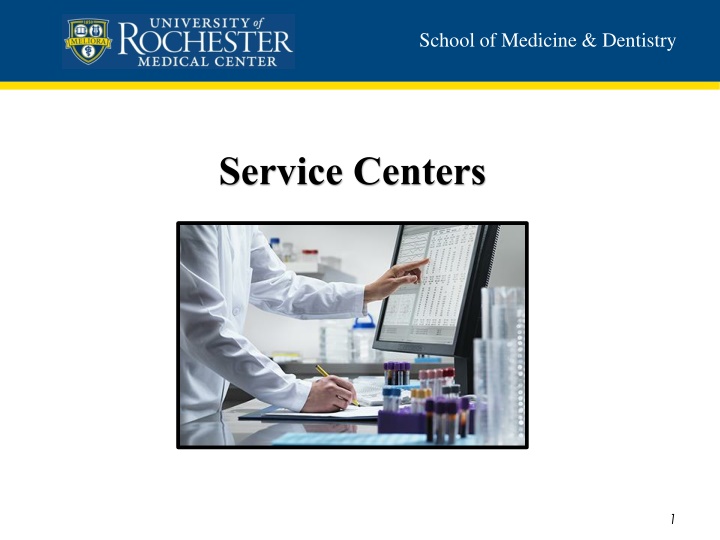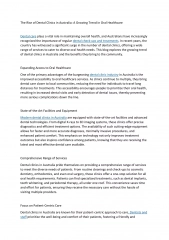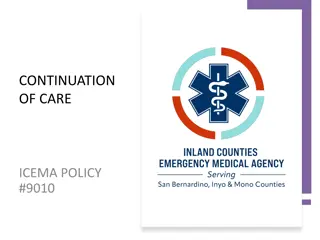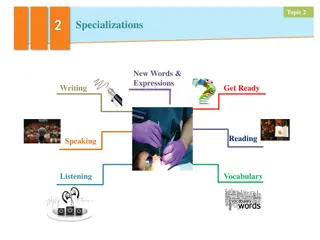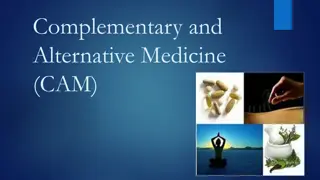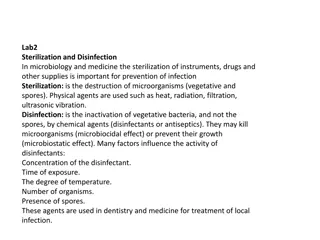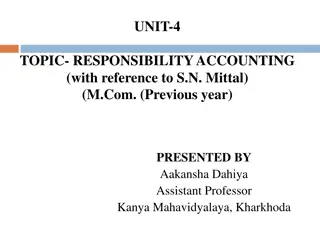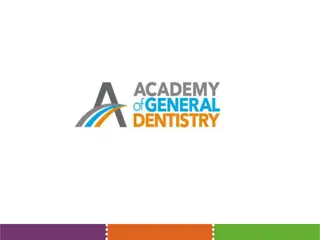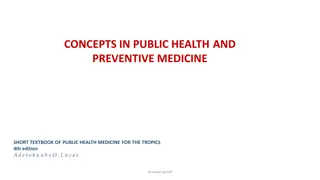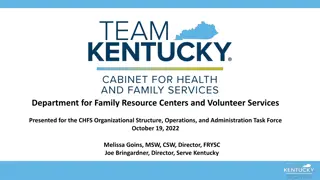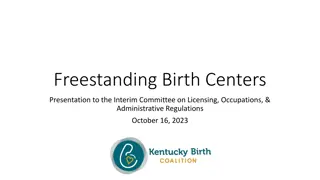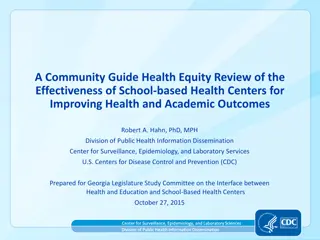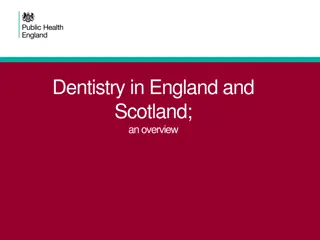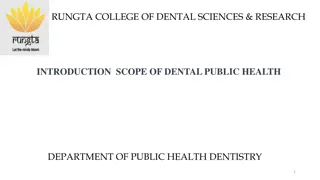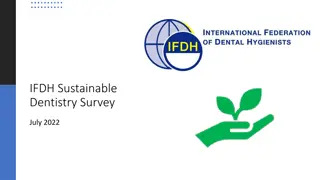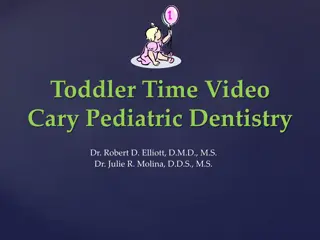School of Medicine & Dentistry Service Centers
Service Centers in the School of Medicine & Dentistry are units within Cost Centers that charge for goods or services in direct support of research or academic missions. The budgets are updated annually, and considerations include historical data, current projections, inflation, personnel, and user base. Learn about allowable and unallowable direct costs in budgeting for a Service Center.
Download Presentation

Please find below an Image/Link to download the presentation.
The content on the website is provided AS IS for your information and personal use only. It may not be sold, licensed, or shared on other websites without obtaining consent from the author.If you encounter any issues during the download, it is possible that the publisher has removed the file from their server.
You are allowed to download the files provided on this website for personal or commercial use, subject to the condition that they are used lawfully. All files are the property of their respective owners.
The content on the website is provided AS IS for your information and personal use only. It may not be sold, licensed, or shared on other websites without obtaining consent from the author.
E N D
Presentation Transcript
School of Medicine & Dentistry Service Centers 1
School of Medicine & Dentistry What are Service Centers? Service Centers are Units within Cost Centers (departments) that charge for goods or services in direct support of the research or academic missions of the University and recover costs through charges/fees to internal and external users To the extent that these fees are charged to federally funded grants and contracts, federal cost principles must be taken into consideration in establishing these rates All Service Centers are expected to recover no more than the aggregate costs of their operations through charges to users (i.e., cannot make a profit). All Service Centers must be able to demonstrate compliance with federal requirements, and cannot use fee structures that discriminate against federal funding sources 2
School of Medicine & Dentistry Service Center Budgets Updated annually Timing is similar to other operating budgets January mid-February Service center budgets due to Dean s Office/in Axiom a couple weeks early of budget system close to allow for Dean s Office review Budget should be based on Historical data Current FY projections Known changes necessary for next FY Considerations: Inflation Personnel User base and its volume 3
School of Medicine & Dentistry How do I put together a budget and rate structure together for a service center? 4
School of Medicine & Dentistry What are Allowable Direct Costs that can be included in a budget for a Service Center? Salaries and fringe benefits Materials and supplies Maintenance and repair, including equipment maintenance agreements Equipment depreciation (service center R&R) Rentals and leases, including equipment leases Training specific to the Service Center Purchased services/professional fees (e.g. consultants) 5
School of Medicine & Dentistry What are Unallowable Direct Costs that should not be included in a budget for a Service Center? Alcoholic beverages Airfare in excess of coach Bad debt or uncollectible billings Capital equipment purchases Entertainment (including meals/beverages for employees) Donations or contributions Gifts (includes employee recognition) Memberships Salaries over the NIH Cap Grant deficit write-offs Subsidies **For a complete list of unallowable costs please refer to 2 CFR 200 6
School of Medicine & Dentistry Potential rate structure(s): Consumption and Output Usage Bases costs are distributed on the basis of a unit of measurement, such as hours, pounds, or gallons. When measures of consumption are unavailable or impractical, the basis of allocation may be to measure the output of the Service Center on a per unit cost. Consumption (e.g. billable hours) Output (e.g. number of black boxes) **most common** 7
School of Medicine & Dentistry Potential rate structure(s): Cost of Sale Usage Base applicable for those centers which are product rather than service oriented. Since the cost is known for each product for sale, an appropriate markup should be established to recoup the operating costs associated with the disbursement of the products. The markup is added to the cost of the product and the resulting price is what the Service Center should charge. Detailed instructions for calculating each of these rates are included on the Service Center budgeting template. If there is more than one service line, one service cannot subsidize another. Service lines and the associated rate must be based on actual costs associated with that service line. 8
School of Medicine & Dentistry What are Service Center Administrators accounting expectations? Budget development includes Excel template and Axiom (these two must match) Monthly review of the FAO ledgers monitoring for projected deficit or surplus monitoring for unallowable charges and making corrections prepare mid-year adjustments if necessary Service center balances need to be within +/- 15% of total budget at all times with goal of breakeven. Add all employees budgeted effort to the Service Center FAO Record retention: 7 years 9
School of Medicine & Dentistry What are Service Center Administrators accounting expectations? Billing should be completed on an monthly basis, using manual JEs (small scale) or URFinancials integrations (large scale) with a specific unique memo identifier for the Service Center. Be able to produce backup records in a timely manner that provides account numbers showing both the debit and credit amounts and all backup for the calculations and FAOs charged. 10
School of Medicine & Dentistry Processing monthly JEs: Service Center (SC) ledger accounts, spend and revenue categories Expense recorded as: Ledger account: 65610 SC Charges Spend Category: 55650 SC Charges 55660 SC Fully Costed Charges (exempt from indirects due to F&A charges included in the rates) Revenue recorded as: Ledger account: 65610 SC charges (internal customers) 46800 Miscellaneous Revenue (external customer) Revenue category: 55650 SC charges (Spend Category for internal customers) 55660 SC Fully costed charges (internal customer and exempt from indirects) 13700 Miscellaneous Revenue (Revenue Category for external customers) 11
School of Medicine & Dentistry Sample journal entry: 12
School of Medicine & Dentistry Service Center Space Considerations URSpace should be updated annually (at the least) including room and occupant data. This will make the space survey which occurs every 4 years considerably easier. If possible, separate space from other research activity is best. 13
School of Medicine & Dentistry Appendix Service Center Policy: http://www.rochester.edu/adminfinance/finance/Departments/ORACS/as sets/pdf/service-center-policy-april-2018.pdf Service Center Guidelines: http://www.rochester.edu/adminfinance/finance/Departments/ORACS/as sets/pdf/service-center-guidelines-april-2018.pdf Service Center Additional Information Form: http://www.rochester.edu/adminfinance/finance/assets/pdf/service- center-additional-information-form.pdf 14
